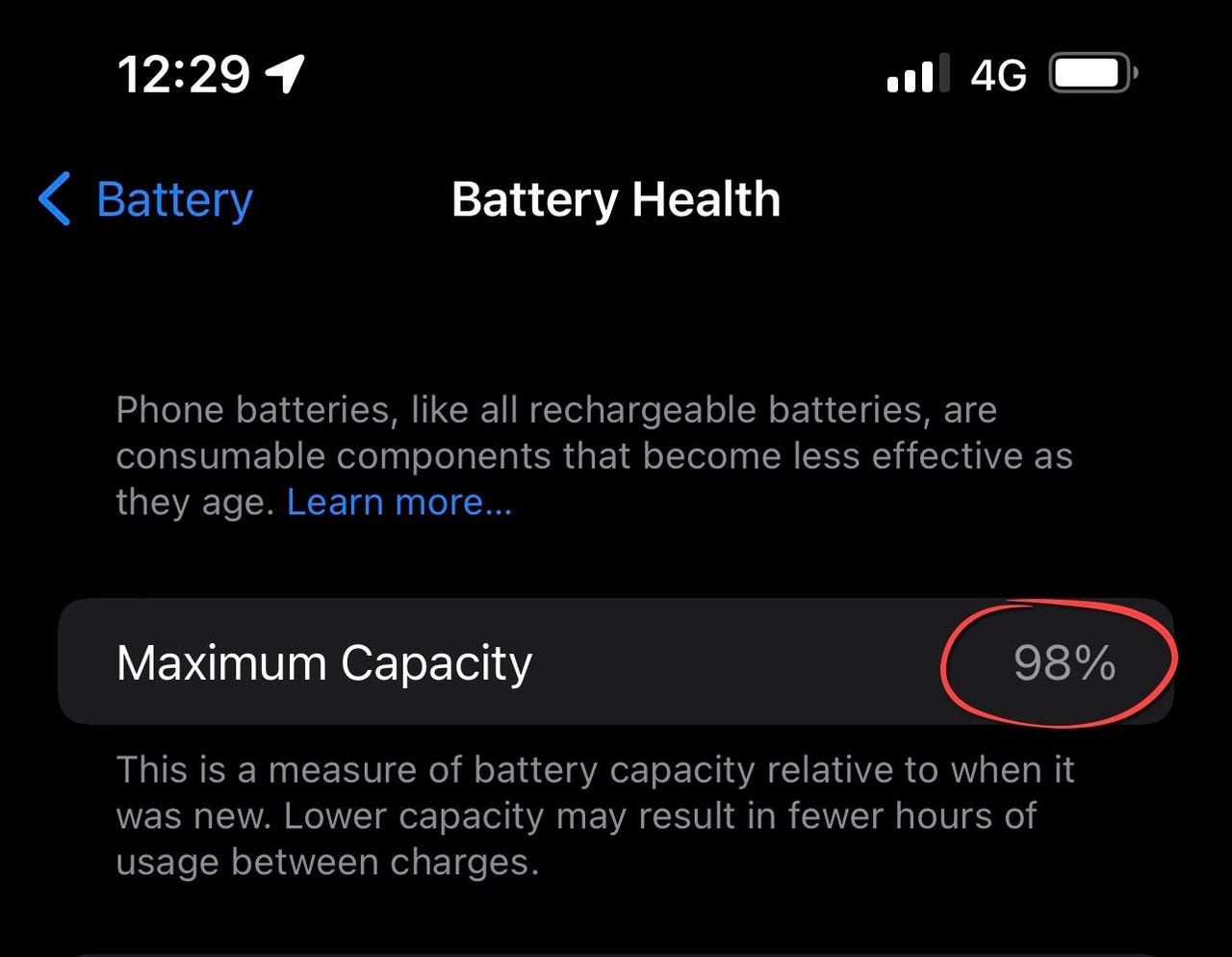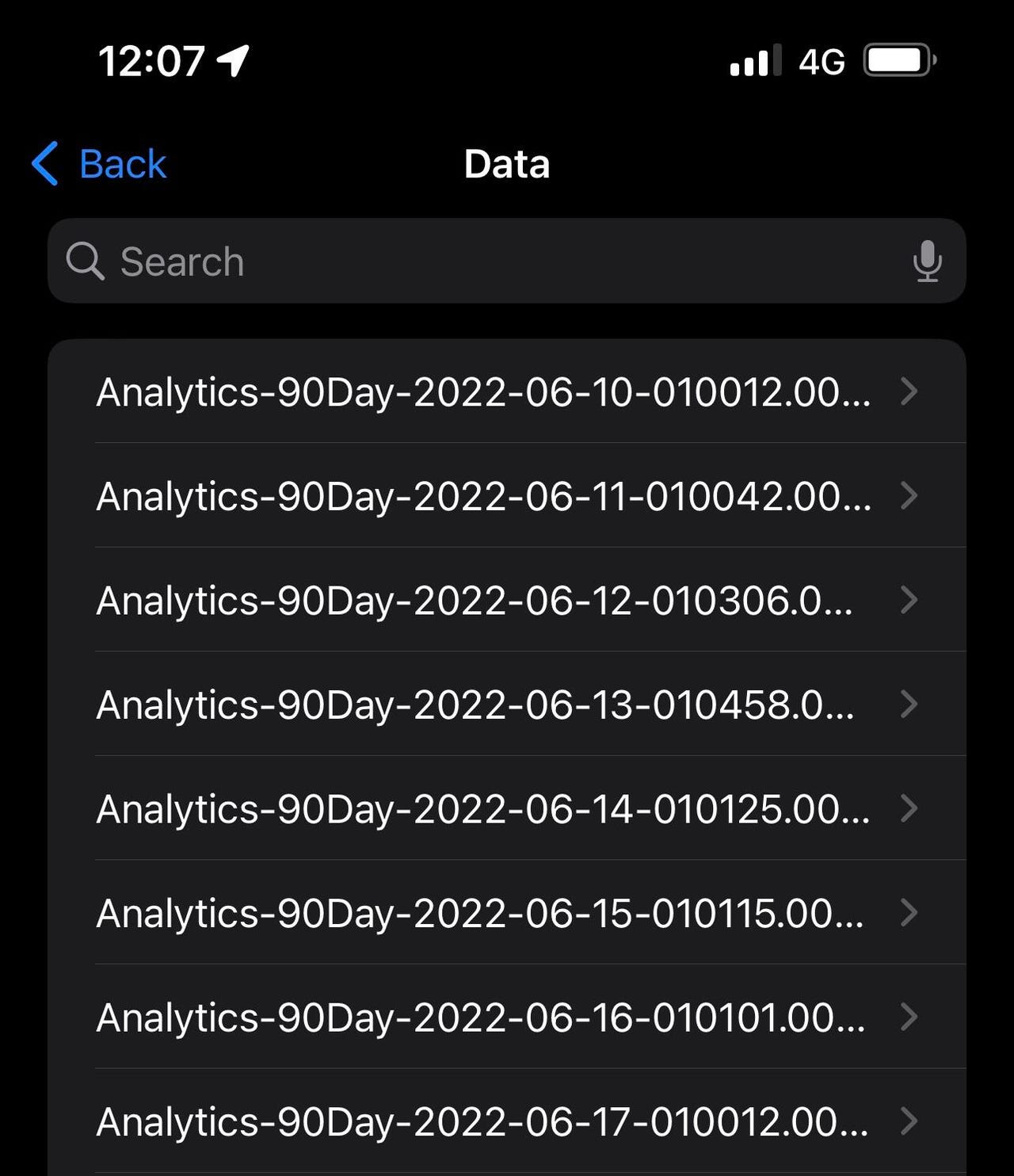People seem obsessed with the health of their iPhone battery. Truly obsessed!
You can see this information yourself by accessing Settings >> Battery and clicking on State battery health and charging.
But I’m here to tell you that this number doesn’t have much value. It doesn’t tell you anything meaningful about the actual health of your battery.
My iPhone tells me that my battery is still at 98% capacity after months of use!

State battery health on iOS. Adrian Kingsley-Hughes.
It does not make sense. But actually your iPhone knows the truth. Because iOS collects a lot of data about your battery and overall system health. But as usual, Apple does not facilitate access to this information and has chosen to bury this data deep in the bowels of iOS.
Information is only saved if you choose to share it with Apple…
To find this information, you must access Settings > Privacy and securitythen scroll down and tap Analysis and improvements.
Then you need to click Analysis data. To have the necessary information you will have to have validated beforehand Share analysis (iPhone+Watch). If it’s not enabled, you’ll need to enable it and wait a day or so for the iPhone to collect the data.
Yes, information is only saved if you choose to share it with Apple… which doesn’t make it easy for you.
So if analytics is enabled, tap on it and you’ll see what looks like a stream of data appear.

Diagnostic Data Wall!
Adrian Kingsley-Hughes
Don’t panic when you see all this!
You need to scroll until you find a file starting with the name log-aggregated . There will probably be quite a few with dates in the name.
The last one will be at the bottom of the list. Oh, but if you have an Apple Watch paired with the iPhone, there will be a similar file for that too. To tell the difference, tap on it to open the file, scroll up and see if it’s mentioned iPhone OS and no WatchOS.
Going through this data from the iPhone itself can be a pain (although you can copy and paste into an app like Notes for easier reading).
What I do is press the button Share and so I send the file to myself by email so that I can open it at my leisure on a Mac or PC.
The file contains a lot of information, so once opened in a text editor you can start searching for specific information.
Here I’m looking for four specific entries:
com.apple.ioreport.BatteryCycleCount com.apple.power.battery.design_capacity -
com.apple.power.battery.nominal_charge_capacity -
com.apple.power.battery.MaximumFCC
Since these will be scattered throughout the file, I suggest you do a search on BatteryCycleCount , design_capacity , nominal_load_capacity And raw_max_capacity .
Below these entries will be a number inside tags whole.
com.apple.ioreport.BatteryCycleCount 264 -
com.apple.power.battery.design_capacity 4325 -
com.apple.power.battery.nominal_charge_capacity 4226 -
com.apple.power.battery.MaximumFCC 4523
So what do these numbers mean?
- BatteryCycleCount is the number of recharge cycles already carried out by the battery.
- design_capacity is the nominal capacity that Apple initially gives for the battery, measured in mAh.
- nominal_load_capacity is the battery capacity as it currently stands, measured in mAh.
- MaximumFCCwas the maximum capacity of the battery (almost always, this is the first charge capacity, when brand new), measured in mAh.
Note the difference between the nominal battery capacity ( design_capacity ) and its actual capacity when new ( MaximumFCC ).
This is a difference of almost 200 mAh.
Apple lists a nominal capacity on its batteries, but this is a theoretical number and actual capacity will vary due to manufacturing variations.
But not every battery Apple puts in iPhones will have a lower capacity than the rated capacity, and in truth, all the ones I’ve come across have a higher capacity.
This is why the index battery health stays at 100% for so long and doesn’t start to diminish from day one.
And that’s why this number battery status no sense.
It is therefore not possible that after 264 recharge cycles, my battery has only lost 2% of its capacity.
And yet, according to Apple, the battery is designed to conserve 80% of its capacity after 500 complete charge cycles .
But what do you do yourself to reduce battery wear?
Although your battery will always wear out, you can take steps to reduce premature wear.
Under normal wear and tear, your battery will lose approximately one percentage point every 25 cycles (note that you may not notice this immediately because the actual capacity or MaximumFCC of the battery is higher than the rated capacity). It’s physics, and other than using your iPhone less, there’s not much you can do about it.
My battery therefore lost around 10% of its capacity. You can’t change the laws of physics!
However, you can reduce premature battery wear by keeping it within its rated temperature zone and not overcharging it.
The iOS feature called Optimized Battery Charging does a good job of preventing premature battery wear due to overcharging. But note that all you’re doing is reducing premature battery wear. Your battery will wear out, so take advantage of it while it’s working and plan to get it replaced or replace your iPhone. And stop obsessing about this data about the health of your battery!
